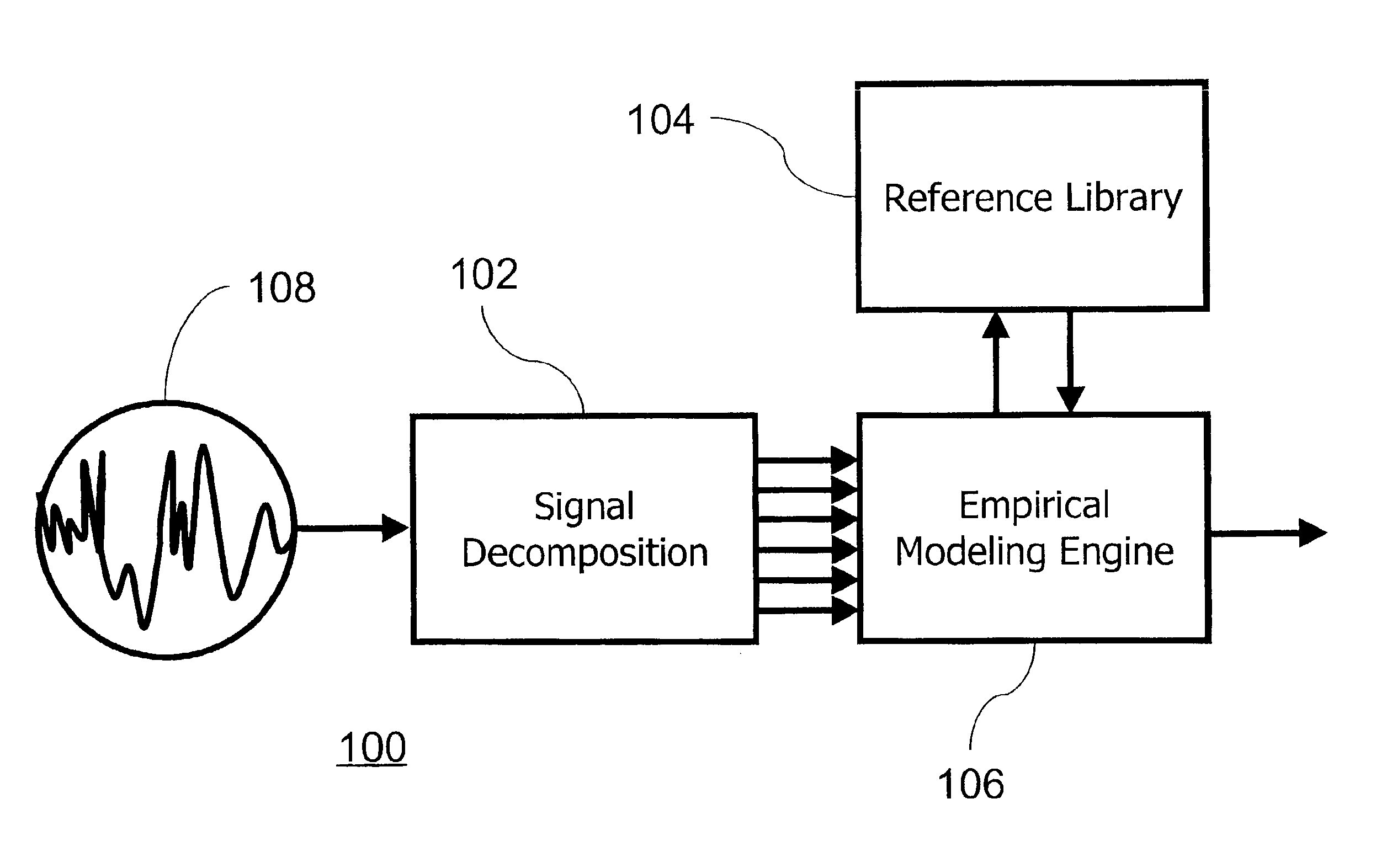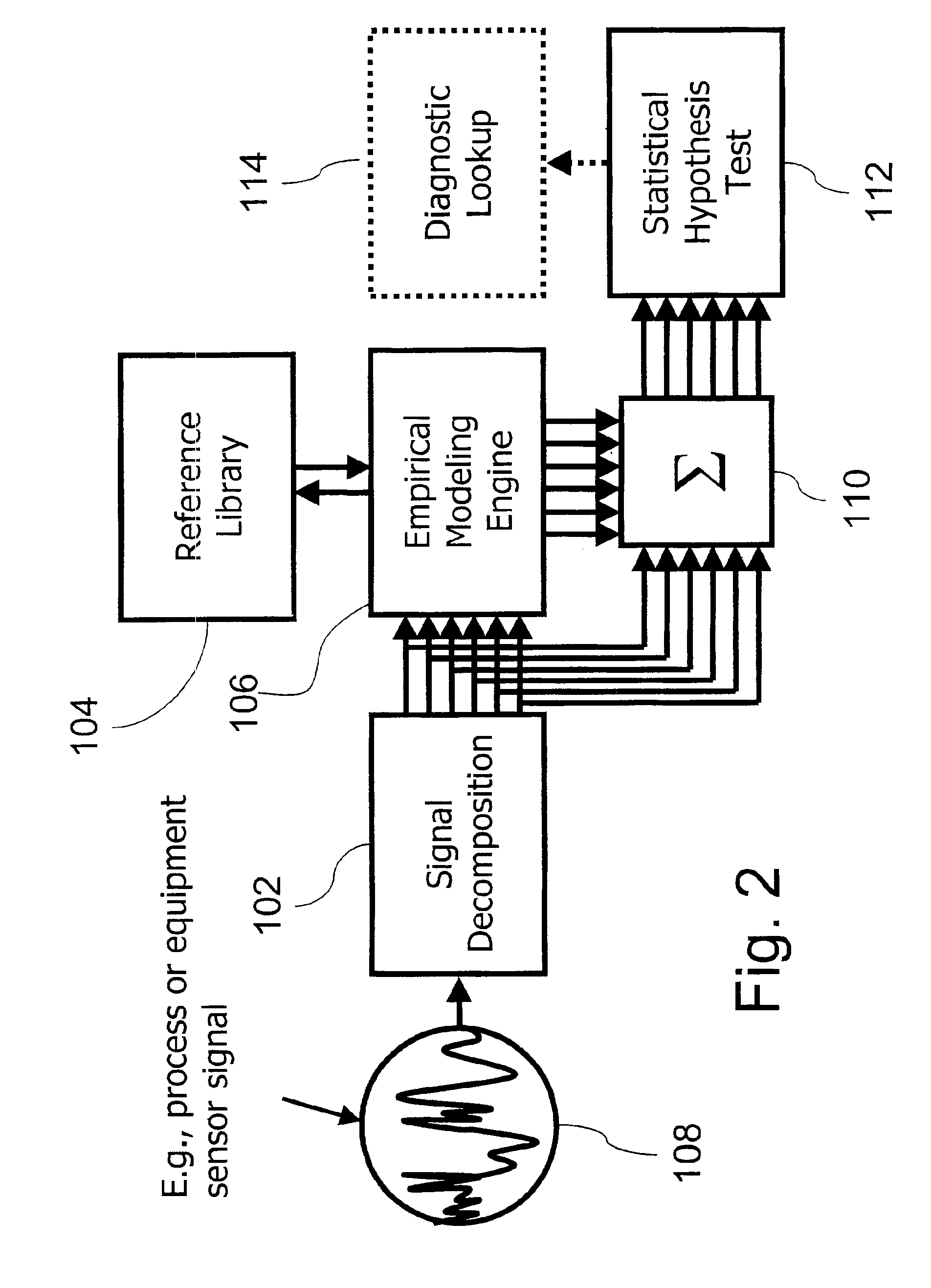Complex signal decomposition and modeling
- Summary
- Abstract
- Description
- Claims
- Application Information
AI Technical Summary
Benefits of technology
Problems solved by technology
Method used
Image
Examples
Embodiment Construction
[0023]Turning now to the drawings and, more particularly, FIG. 1 generally shows the preferred embodiment signal decomposition and modeling system 100 of the present invention, which generally includes a signal receiver 108, a signal decomposition module 102, a reference library 104 and an empirical modeling engine 106. Signal receiver 108 serves to provide the complex signal to the signal decomposition module 102, which converts the signal to a plurality of correlated component signals. Empirical modeling engine 106 is disposed to receive the plurality of inputs, and with reference to a set of data embodying classification information or known operational information stored in reference library 104, output an indication about the complex signal and the system it is drawn from.
[0024]System 100 has application to any complex signal, whether naturally occurring, derived from a system, system operation or a process being carried out in a system or otherwise generated, naturally or arti...
PUM
 Login to View More
Login to View More Abstract
Description
Claims
Application Information
 Login to View More
Login to View More - R&D
- Intellectual Property
- Life Sciences
- Materials
- Tech Scout
- Unparalleled Data Quality
- Higher Quality Content
- 60% Fewer Hallucinations
Browse by: Latest US Patents, China's latest patents, Technical Efficacy Thesaurus, Application Domain, Technology Topic, Popular Technical Reports.
© 2025 PatSnap. All rights reserved.Legal|Privacy policy|Modern Slavery Act Transparency Statement|Sitemap|About US| Contact US: help@patsnap.com



